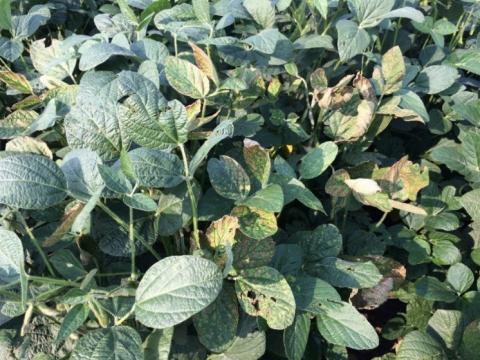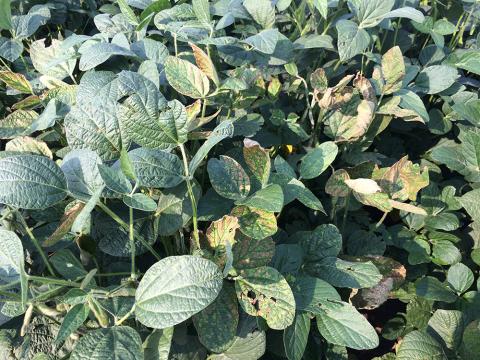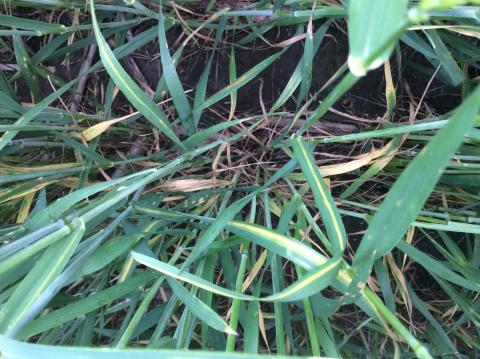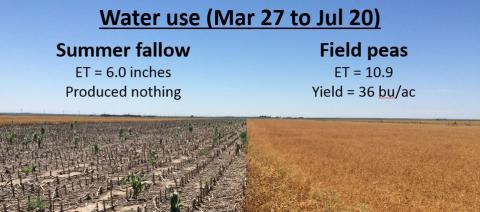Root Disease Update
January 11, 2019
The cool weather during spring 2018 delayed planting and was conducive to root and soilborne pathogens. Root diseases, including those caused by Fusarium and Rhizoctonia species were prevalent in many fields, causing damping off, stunting of seedlings, root rot, seedling blight, poor seedling vigor, and poor stand establishment.
Soybean Sudden Death Syndrome in West Central Nebraska
August 24, 2018
Sudden Death Syndrome (SDS) was found in soybean near Sutherland in west central Nebraska last Friday. While uncommon in the area, moist conditions earlier in the year would have been favorable for its development.
Root and Soilborne Diseases Update
January 8, 2018
Surveys made in 2017 revealed widespread soilborne diseases in many crop hosts and many field locations in the state. This update is provided on four soilborne pathogens: Rhizoctonia, Fusarium, Phytophthora, and Cephalosporium. An article of the 2018 Nebraska Crop Production Clinic Proceedings.
Soilborne and Early Seedling Pathogens and Delayed Planting in Corn and Soybean
May 3, 2018
Soilborne pathogens and early seedling diseases may be more frequent in corn and soybean this year due to cool weather conditions this spring and delayed planting.
Why Control of Volunteer Wheat is Critical to Protecting 2018 Yields
July 13, 2017
Timely control of volunteer wheat and other weeds is key to managing yield loss risk in your 2018 crop. Yield-limiting risk factors affected by weed control include wheat streak mosaic and other diseases, insects (wheat stem sawfly and disease vectors), moisture loss, and increased weed seed production.
Cephalosporium Leaf Stripe Developing in West Central Wheat
May 25, 2017
Cephalosporium stripe, caused by a soilborne pathogen, is developing in wheat in west central Nebraska and may reduce yields if severe.
Field Pea Seeding Rates, Seeding Depth, and Inoculant
March 13, 2017
Grain-type field peas are a cool season grain crop grown as an alternative for no-till summer fallow in a semiarid cereal-based cropping systems such as wheat-corn-fallow and/or wheat-fallow. They are typically planted in mid-March and harvested late-July. This article reports on research conducted on seeding practices and offers recommendations for producers on the economically optimal seeding rate, seeding depth, and inoculant to grow field peas in western Nebraska.
Field Pea Production: Rotational Costs and Benefits
March 10, 2017
Research findings show benefits in soil nutrient cycling, water infiltration, and microbial activity from replacing fallow with grain-type field peas in a wheat-fallow rotation in western Nebraska.







